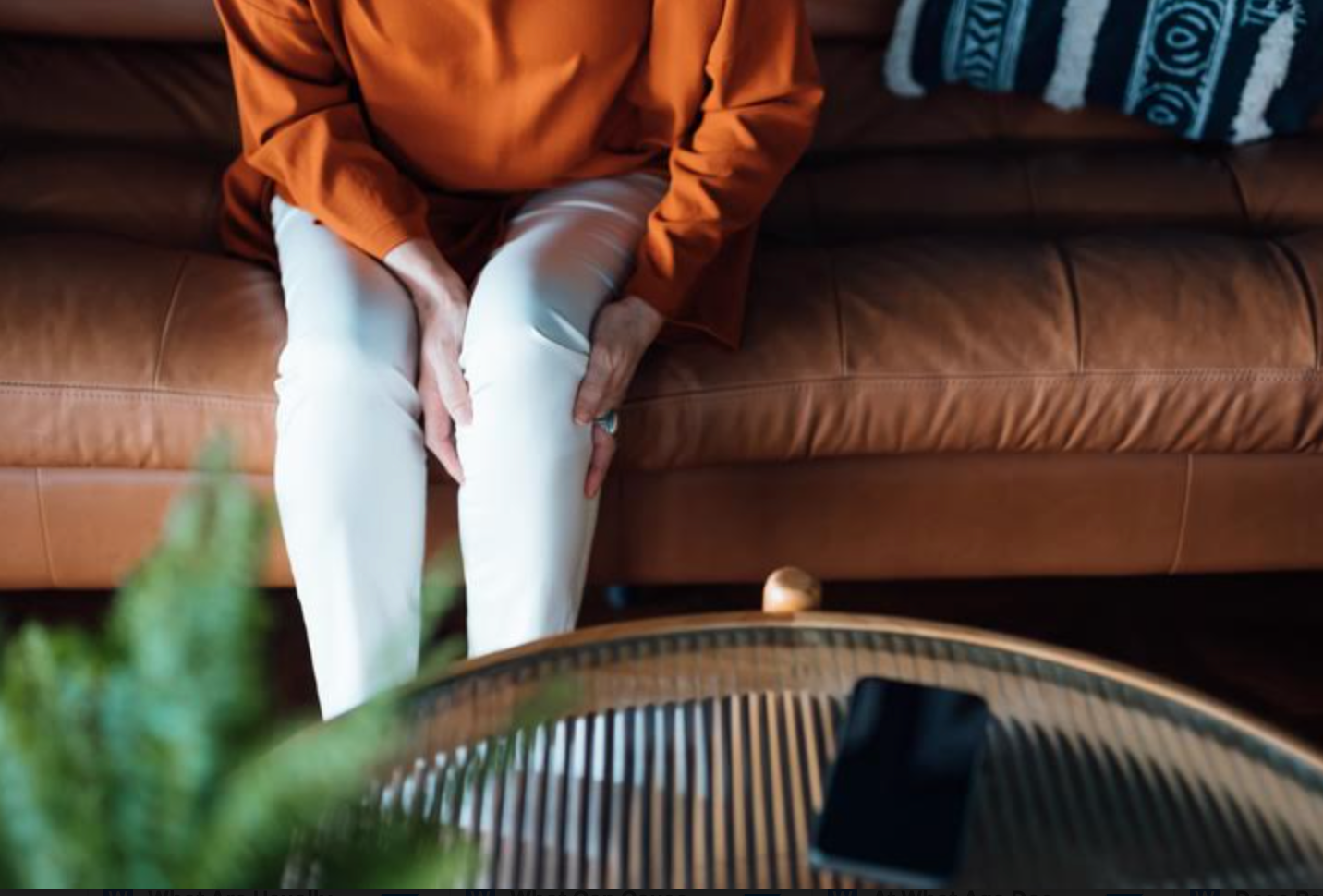
Knee pain is quite common, but that doesn’t make it any easier to live with. Knee pain doesn’t discriminate; it affects individuals of all ages, causing them discomfort and limiting their mobility.
Many cases of knee pain are associated with an injury, but sometimes, knee pain happens without an apparent cause. If you know the likely cause of your knee pain, even if you haven’t experienced an injury, you can better manage your symptoms and find appropriate treatment options.
Noninjury Causes of Knee Pain
Some noninjury causes of knee pain include osteoarthritis, runner’s knee, bursitis, tendinitis, gout, and cysts.
Osteoarthritis
Osteoarthritis is a degenerative condition affecting millions of people throughout the world. It causes the breakdown of cartilage, which leads to bone-on-bone contact. This is an extremely painful condition.
Some causes of osteoarthritis include genetics, age, and obesity.
Runner’s Knee
Runner’s knee is officially called patellofemoral pain syndrome. It’s a common cause of knee pain in younger and more active individuals.
This condition usually appears due to misaligned or imbalanced muscles surrounding the knee joint. When the muscles around the knee joint aren’t functioning well, the kneecap doesn’t track properly. This causes stress on surrounding tissue, which leads to pain.
Bursitis
Bursitis happens when bursae, which are small, fluid-filled sacs located between bones and tendons, become inflamed. This inflammation is usually due to repetitive motions or overuse from activities like kneeling or manual labor.
Tendinitis
Tendinitis refers to the inflammation of a tendon. Tendons in the knee can become inflamed due to overuse, repetitive strain, or a sudden increase in activity levels.
Gout
Gout is a form of inflammatory arthritis caused by uric acid crystals accumulating in the joints. While gout usually affects the feet, it can also affect the knee joint, causing severe pain and swelling.
Baker’s Cyst
A Baker’s cyst is a fluid-filled sac that forms at the back of the knee joint. It causes pain, swelling, and a general feeling of tightness around the area.
These cysts usually form as a result of an underlying issue with the knee, like cartilage damage or arthritis.
What Are Options For Managing Knee Pain
Knee pain can be caused by a variety of factors, including injury, overuse, or medical conditions such as arthritis. Here are some tips for managing knee pain:
Rest: Avoid putting pressure on the knee by resting as much as possible. Try to limit activities that exacerbate the pain.
Ice: Applying ice to the knee can help reduce pain and swelling. Use a cold pack, ice wrap, or even a bag of frozen peas wrapped in a towel. Apply for 15-20 minutes at a time, several times a day.
Compression: Using a knee brace or compression sleeve can help reduce swelling and provide support for the knee.
Elevation: When resting, elevate your knee above heart level. This can help reduce swelling and ease pain.
Pain relievers: Over-the-counter pain relievers such as acetaminophen, ibuprofen, or naproxen can help relieve pain and reduce inflammation.
Physical therapy: A physical therapist can provide exercises and stretches that can help strengthen the knee and improve mobility.
Weight management: Excess weight can put extra stress on the knee joint, worsening pain. Losing weight can help reduce pain and improve joint function.
Surgery: In severe cases, surgery may be necessary to repair or replace the knee joint. Talk to your doctor about your options if your knee pain persists despite conservative treatments.
What is Regenerative Medicine for Knee Pain?
Also known as stem cell therapy, regenerative medicine is an emerging field that uses the body’s own cells and tissues to promote healing and repair. It holds promise for treating knee pain by stimulating the growth of new tissue and reducing inflammation. Here are some regenerative medicine techniques that are commonly used to manage knee pain:
Platelet-rich plasma (PRP) therapy: PRP therapy involves injecting a concentrated solution of platelets, growth factors, and other healing factors directly into the knee joint. The platelets stimulate the growth of new tissue and reduce inflammation.
Stem cell therapy: Stem cells are cells that have the ability to develop into different types of cells, including bone, cartilage, and muscle cells. Stem cell therapy involves injecting stem cells into the knee joint to stimulate the growth of new tissue and reduce inflammation.
When you know the underlying causes of your knee pain and are able to recognize symptoms, it’s easier to find the right preventive and regenerative treatments to reduce or completely eliminate your pain. Regenerative medicine is a promising avenue for managing knee pain that could allow many patients to return to an active and pain-free lifestyle.

